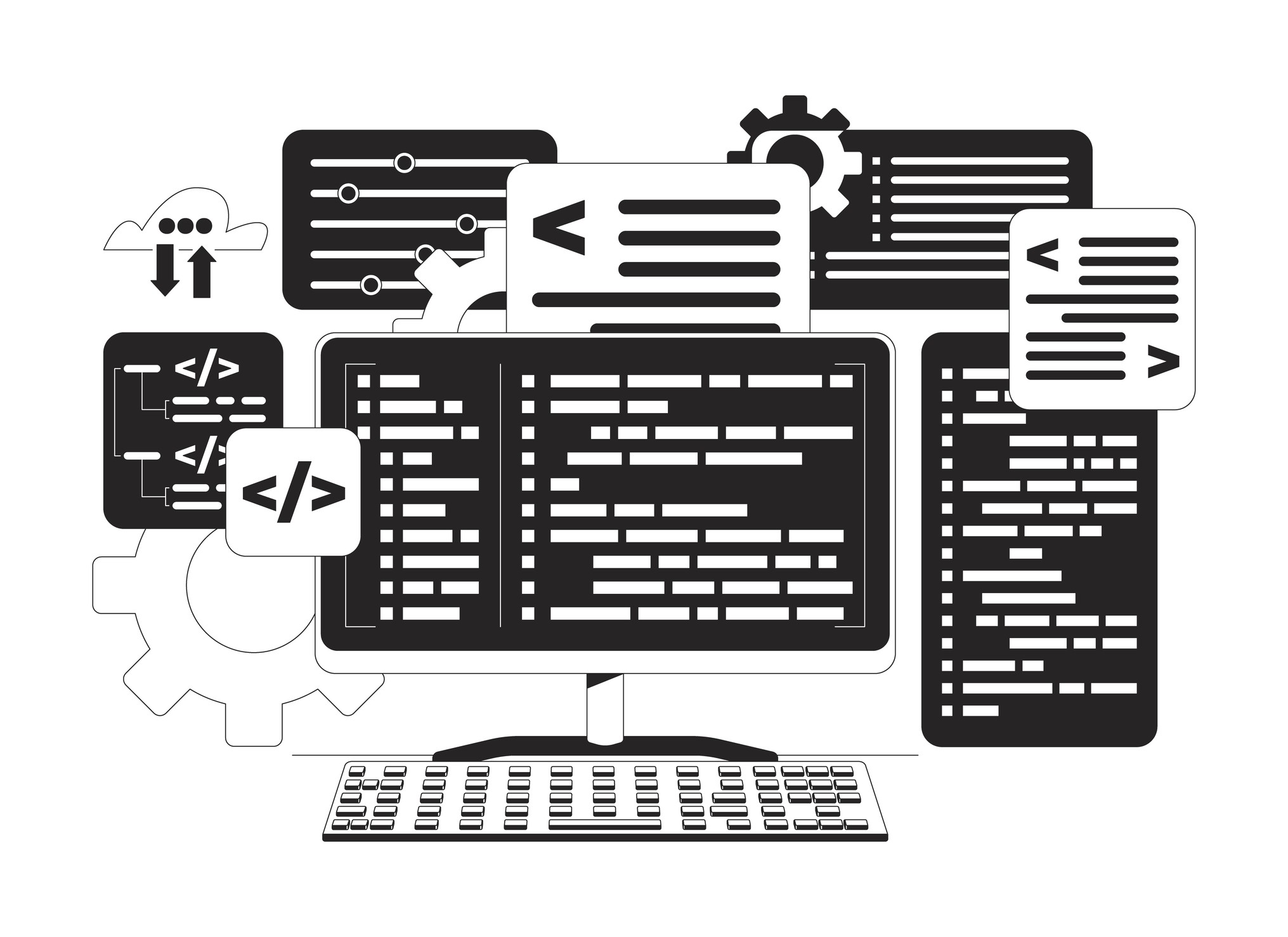Owning a website is much like owning a car: the initial excitement of driving it off the lot is invigorating, but without regular tune-ups and maintenance, it'll soon lose its luster and efficiency. Similarly, launching a website is only the beginning of a journey in the digital realm. Your website, once live, becomes a dynamic entity, interacting with users, adapting to the latest tech trends, and reflecting your brand's growth.
However, just as a car left in the garage will gather dust and rust, a website that's ignored post-launch can quickly become outdated, vulnerable, and misaligned with your brand's objectives. Potential issues range from security vulnerabilities to decreased user satisfaction, ultimately affecting your site's performance and ROI.
Ensuring that your digital platform remains robust, relevant, and reliable requires consistent care, much like any valuable asset in your possession. The path to effective digital stewardship involves recognizing the importance of post-launch maintenance and being vigilant about potential pitfalls that come with neglect.
Ever-evolving CMS Landscape
Content management systems (CMS) are the backbone of many websites. They offer the flexibility, user-friendliness, and adaptability required by website owners to manage and present their content in the best possible manner. But just like any software, these systems are in a constant state of evolution.
Keeping Up with CMS Updates
One of the biggest advantages of using renowned CMS platforms like WordPress, Joomla, and Drupal is the frequent updates they release. These updates not only introduce new features and improvements but also address vulnerabilities and bugs that could potentially harm your site.
Regularly updating your CMS ensures that you're safeguarded against known vulnerabilities. It's like getting a vaccine for your website against potential threats.
Also, these updates can bring about improvements in performance, making your website faster and more efficient. Ignoring them, on the other hand, leaves your site exposed to potential hacks, performance issues, and other technical glitches.
Outdated Plugins and Themes: The Silent Killers
A major allure of CMS platforms is the variety of plugins and themes available, which allow you to extend functionalities and customize the look of your website. However, these assets can become liabilities if not managed correctly.
Outdated plugins and themes can become silent killers for your website. They might contain vulnerabilities that hackers can exploit. Furthermore, as core CMS platforms update, older plugins and themes might not be compatible, leading to broken functionalities or, even worse, a crashed website.
It's vital to keep a regular check on the plugins and themes you've installed. Ensure they are from reputable sources, are regularly updated by their developers, and remain compatible with the core CMS version you're using.
Before updating, it's also a good practice to check for any known issues and always have a recent backup to restore from in case something goes awry.
Custom Sites: Staying Modern
Custom-built websites offer a unique blend of functionality tailored specifically for a business's needs. But unlike CMS platforms, which come with frequent official updates, custom sites demand proactive attention from their owners to remain relevant and efficient.
Adapting to New SEO Rules
Search Engine Optimization (SEO) isn't a "set it and forget it" strategy. As search engine algorithms evolve, so must your website's SEO practices. Google, Bing, and other search engines constantly refine how they rank websites, aiming to offer the most relevant and high-quality content to their users.
For custom site owners, this means staying informed about the latest SEO trends and best practices. Regular website audits can highlight areas of improvement, whether it's optimizing meta tags, improving site speed, or enhancing user experience.
Keeping content fresh and in line with current SEO standards not only improves rankings but also ensures your target audience finds, visits, and stays on your site.
Phasing Out Old Technology
The tech world moves fast. What was cutting-edge a few years ago might now be considered outdated. As web standards and practices evolve, it's crucial to reassess and update the technological underpinnings of your custom site.
Web users today expect sites to load quickly and function seamlessly on any device, be it a desktop, tablet, or smartphone. This necessitates the implementation of responsive designs that adapt to various screen sizes, ensuring an optimal viewing experience. Additionally, older technologies like Flash have been phased out in favour of more secure and efficient options.
Staying abreast of these technological shifts is not just about providing a better user experience. It's also about maintaining trust. A site that appears outdated or fails to load properly on newer devices can harm a brand's credibility.
Why Regular Backups are Important
If there's one lifesaver you can always rely on, it's a comprehensive, recent backup. No matter how secure or well-maintained a site is, unexpected challenges can arise—be it from malicious attacks, accidental deletions, or server issues. In these moments, having a robust backup in place is invaluable.
Think of periodic backups as your website's insurance policy. They capture your site's current state, allowing you to restore it to that point should anything go wrong. Whether faced with a cyberattack that compromises your content, or a simple human error that results in lost data, backups ensure that you can quickly recover without significant downtime or loss of information.
While it's tempting to adopt a "set it and forget it" mentality, the digital realm's dynamic nature necessitates regular backup schedules.
As your site grows and evolves—adding new content, features, or user data—it becomes even more critical to capture these changes frequently.
Tools and Methods for Effective Backups
A multitude of tools, both free and premium, cater to different website types and hosting environments. Options range from plugins for CMS platforms like WordPress to dedicated backup services and cloud storage solutions. It's essential to select a method that aligns with your site's infrastructure and your technical comfort level.
Regardless of the tools chosen, consider the following best practices:
- Automate Backups
Ensure that your backup system runs automatically at scheduled intervals, be it daily, weekly, or monthly. - Store Multiple Versions
Keep various versions of your backups, allowing you to revert to different points if needed. - Off-site Storage
Don't solely rely on your hosting provider for backups. Store them off-site, using cloud storage or external hard drives, to safeguard against server failures.
User Experience (UX): Constantly Improving and Adapting
A website isn't just a static digital brochure—it's an evolving entity that interacts with its visitors. As technology and user preferences change, so should the website's design and functionality to ensure the best user experience possible.
User Feedback and Analytics
Feedback is a goldmine. By understanding what users like and dislike about your website, you can make informed decisions about design and functionality changes. Tools like Google Analytics provide insights into user behaviour, showing which pages they visit most, where they spend the most time, and where they drop off.
Feedback forms, surveys, and direct user testimonials can further provide qualitative data about your site's strengths and areas for improvement.
A/B Testing and Design Tweaks
A/B testing involves creating two versions of a webpage and comparing their performance. By serving the two versions to users randomly, you can assess which design or content approach works best in terms of engagement, conversion rates, or other key metrics.
Regularly conducting A/B tests ensures that your site remains optimized for its goals, be it lead generation, sales, or information dissemination. The iterative nature of A/B testing allows for constant refinement, ensuring that your site not only meets but exceeds user expectations.
Owning a website is an ongoing commitment, not a one-time task. A website requires ongoing attention, persistently refining and upgrading it to align with the latest standards and safeguarding against emerging risks. By valuing consistent maintenance and growth, you amplify your site's lifespan and deepen its significance to your visitors.




